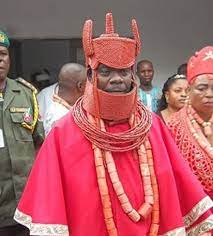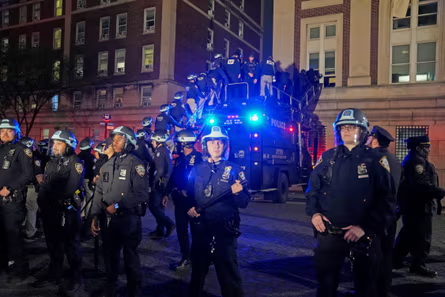The typical Isoko marriage consists of three steps: First visit, second visit, and the paying of the pride price. If the tribe of Isoko was a man, Urhobo would have been his twin brother.
For many years and still counting, Isoko as a tribe has been deemed as one with Urhobo by most people outside the shores of Delta State.
As a matter of fact, there are people who don’t even know about the tribe at all. And this is because, in terms of political aspiration and infrastructural development, Isoko seems to be lagging behind.
Nevertheless, the fact still remains that it is one of the finest tribes in Nigeria.
Origin of the Isoko people
According to oral tradition, the first group of Isoko ancestors migrated to the region of Delta State, which the Isoko people now occupy, from Benin. It is said that the ancestors of this first group were Erowa (the senior) User and Okpe.
The second group, as stated by oral tradition, left Benin during the reign of Oba Ozolua. And according to history, Oba Ozolua ruled Benin from 1483 until 1514.
It was during this time that the ancestors of Iyede led the second group out of Benin.
Specifically, the fifteenth and sixteenth century can be said to be an era of migration in the Benin Kingdom. It was during this period that the Isokos, Urhobos, and the royal house of Itsekiri, left the great kingdom to the various regions they now occupy.
However, there would be further migrations by sub-groups within the first and second groups. And in some cases, it was children moving from parental settlement to virgin lands.
Thus the ancestors of Effurun- Otor in Ughelli Local Government Area came from Erowa in Isoko South LGA, while Effurun in Uvwie clan migrated from Effurun- Otor.
Ekpan and Ugborikoko would move from Effurun to settle in their present sites.
Irri would move from Uzere to its present location; while Oleh would move from Irri: This could easily explain the nearness between the two towns.
It is said that the Agbon clan in Ethiope East LGA migrated from Irri: Agbon consists of Kokori, Okpara, (Inland and waterside), and Eku towns.
In the same spirit of migration, Okpe in Urhobo migrated from Okpe-Isoko alongside Ozoro. But while Ozoro settled in her present location, Okpe would further move to where is now known as Cherokee.
Who knows if this is the reason why the Okpes have refused to identify themselves as Urhobo?
Be that as it may, Emevor and Owe are said to have migrated from Iyede. And this could be believed with ease as they are adjacent to each other.
READ ALSO: Here are 7 foods you need to eat for increased sexual stamina
It is also said that Ibrede and Iyede- Ame in Ndokwa Local Government Area are direct descendants of Iyede. And Ellu, Aradia, and Ovrode are descendants of Owe.
The ancestors of Ofagbe, a town cited between Ovrode and Okpe-Isoko, were said to have migrated from the latter.
Like Erowa, User, and Okpe, the ancestors of Aviara are said to have migrated from Benin and came to its present settlement through the River Niger.
However, of all the clans in Isoko, Olomoro in Isoko South Local Government Area is said to be the only clan to have migrated from Uhrobo, in Olomu.
The ancestors of Igbide and Enhwe are the only exceptions to all other Isoko ancestors that did not come from Benin.
It is said that they came from the East of the River Niger, a location spanning present-day Anambra, Bayelsa, and Rivers states.
Marriage
The typical Isoko marriage consists of three steps: First visit, second visit, and the paying of the bride price.
On the first visit, the groom to be will visit the bride’s home alongside his family members ( about 5 – 10) to introduce and make known their introduction.
Upon their arrival, they would be entertained by the girl’s father with kola nuts and drinks. Additionally, the girl’s father will give his guests money for their trouble finding their way to his house.
In return, the groom’s family will reciprocate by offering the girl’s family their own drinks and kola nut. They will also pay back two times the money that was given to them by the girl’s father.
At the second visit, the groom to be will present his gift (different types of drinks and kola nut), to the girl’s father and the girl is summoned and will be asked if she knew the man and want to marry him.
The presented gifts will be accepted only upon her agreement to marry him. A list of required items needed by the girl’s parent is given to the man to buy or pay the equivalent.
However, it is customary for the girl’s father to introduce the man to some of his family members about 5-10 and about 5-3 of the mother’s family.
The groom must visit these people one after the other and he must fulfill every request they ask of him. Also, list of required items needed by the girl’s parent is given to the man to buy or pay the equivalent.
Afterward, a date for the bride price will be fixed. On this particular day, the families of both parties will come together and agree on the pride price after negotiation. And then the celebration will commence.
Belief
Owing to the strong influence of Western civilization, the Isoko people have, predominantly, become Christians. Nevertheless, traditional worship still thrives among them.
And similar to the belief of other advanced peoples around the world, the Isoko people believe that death is not the end of a person and his relationship with family and loved ones.
Death to them is considered a change from a physical life form to a spiritual form.
The premise of ancestor worship is based on understanding that the course of life is cyclical, not linear. Those who are dead may not be seen physically, but are alive in a different world.













